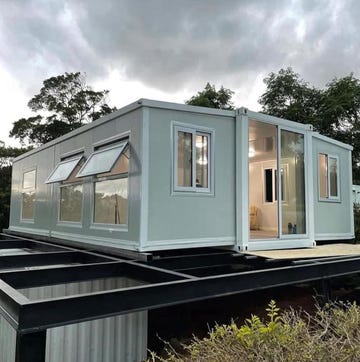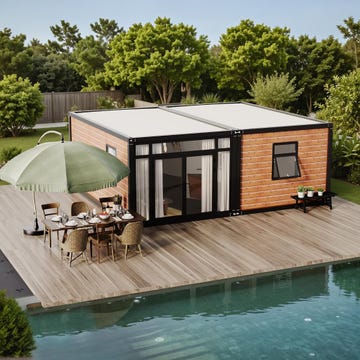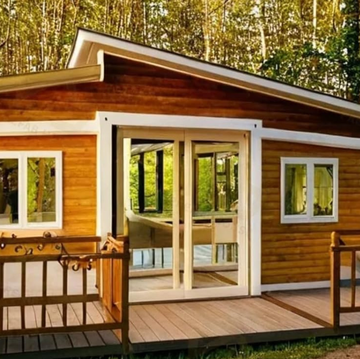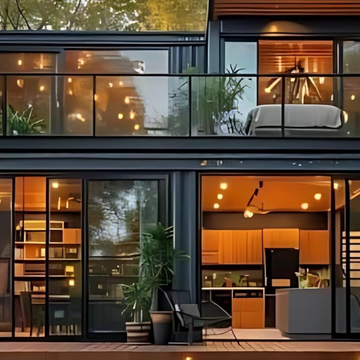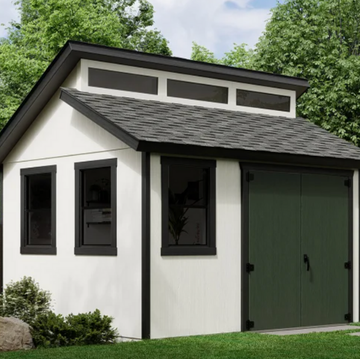Everyone hopes to be able to take care of their family members when they can no longer do so on their own — especially when it comes to assisting our parents in their golden years. That could mean hiring an at-home nurse, finding a quality nursing home or having your parents move in with you.
All of those options have their potential drawbacks, whether it's due to the high cost of caregiving or space constraints. If you find yourself debating the options, there might be a solution you haven't even considered yet: granny pods.
What is a granny pod?
If you've heard of ADUs (accessory dwelling units) or tiny homes before, you essentially understand the concept of a granny pod.
"Some people call them granny pods, granny flats, backyard cottages, guest houses. It's another smaller home on the same property as the main residence. It's freestanding and has everything you would need to live there — a kitchen, bathroom, bedroom, laundry — it's just small," says Hank Hernandez of Alameda Tiny Homes.
What differentiates granny pods from other ADUs is that they're specifically designed to accommodate an elderly occupant's needs. Whether it's a lift to help the resident move between the bed and the bathroom or a video camera system to monitor the space, there are plenty of extras a homeowner can add to their ADU so that it functions in the best way possible for an older relative.
Why are they so popular?
According to the 2024 Cost of Care Survey by Genworth, a long-term care insurance company, the average median cost of a private room in a nursing home in the United States is a whopping $127,750. The national average median assisted living community cost is $70,800.
If you're considering a home renovation or extension to maximize the space in your current home instead of opting for outside care, that project could potentially still cost more than a small ADU — without the added privacy.
But it's not only homeowners with elderly relatives who need care that are incorporating granny pods into their own yards. It's also families who want to take advantage of intergenerational living.
"I grew up living next door to my grandparents and never understood how unique that was until I became a parent. How amazing is it to be able to send your kids next door to their grandparents' house to have breakfast," says Hernandez.
Granny pods allow grandparents to move in with their kids, even if their current homes aren't large enough to accommodate them. They can help take care of the grandkids while their own kids are out working, sit down for a family dinner once everyone's home and then head back to their own space when it's time for bed.
How much does a granny pod cost?
While certain prefabricated dwellings available online start at just about $10,000, that price doesn't typically include anything besides the kit itself, so you'll have to price out installation fees, utility costs and more.
If you're hoping for a more personalized unit that includes design, permits and the installation of the cottage itself, that will cost you upwards of $100k, depending on where you live. Still, if you consider the recurring cost of assisted living, granny pods might be a worthwhile investment.
Are granny pods legal in the United States?
You’ll need to research your local zoning laws to determine whether or not a granny pod is legal in your area. Zoning laws may dictate whether you can have an ADU on your property, and also how much total space on your land may be covered by a structure.
Of course, you may face additional obstacles if you are part of a homeowners' association and bound by its rules, or if you’re in proximity to certain parks or watershed areas for which you'll need to obtain a variance or exemption.
You might also want to reach out to your local power, sewer or water agency for clearance. Check on the septic system as well. Adding an ADU with its own kitchen and bath may mean your system no longer complies and needs updating.

Alesandra is a digital travel and lifestyle journalist based in Los Angeles. Her work has appeared in Good Housekeeping, Woman’s Day, Prevention, Insider, Glamour, Shondaland, AFAR, Parents, TODAY, and countless other online and print outlets. Alesandra has a masters degree in journalism with an emphasis on cultural reporting and criticism from NYU, and a bachelor’s degree from UC Berkeley. An avid traveler, she trots the globe with her husband and their twins.
Laura Millar (she/her) is the assistant lifestyle editor for Good Housekeeping, where she covers home design. Prior to joining Good Housekeeping in 2024, she wrote for NBC's TODAY.com, where she covered everything from entertainment news to pop culture updates.






